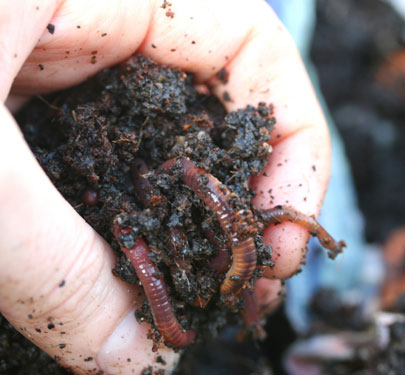They might not be as pretty as kittens but worms could become your favourite pets.
Worms work wonders converting kitchen waste into nutrient-rich fertilizer that will feed your plant and soil.
They will eat their way through the “waste” and churn out a regular supply of solid (castings) and liquid fertilizer for you.
Here are some of the basics to building your own worm farm.
1. Pick A Site
Worms prefer cool, shady spots. The size of your farm depends on you: it’s normally best to start small but have room to expand as your confidence and your worm population grow.
2. Prepare Your Worm Bed
A good depth for a worm bed is 15 cm which is made from a mix of soil, leaves and shredded paper.
Ready-made farms are a popular option and most garden centres will be happy to sell you product, including worms.
Alternatively, you can put your own farm together out of recycled containers. Worms don’t like harsh chemicals so don’t use treated wood.
If you want to trap the liquid from the worms, you’ll need a bed with a tray and, ideally a tap.
Keep the bed moist (not wet).
3. Buy Some Worms
Eisenia foetida, which goes under different names, including Redworms or Tiger worms is a popular species become it thrives amongst rotting vegetables and compost. Worms are usually available by the thousand and you'll need about 1,000-2,000 worms. All going to plan, they will multiply over time.
Spread them onto the bed and watch them burrow away.
The presence of slugs or flies could be a problem. Dusting the surface with lime and ensuring you haven’t added too much food should control this.
4. Feed Your Worms
Worms aren’t fussy eaters. Their diet includes:
- Vegetable scraps
- Fruit peels
- Bread
- Leaves, including tea leaves
The smaller the scraps you feed them, the faster they will chomp through it. Try to add food wastes regularly rather than in big lots. You don’t want to over-feed or it will start to rot.
A handy trick is to cover the food waste you add to the bed with a little soil or compost.
Keep These Foods Off The Worm Diet:
- Dairy products (butter and cheese)
- Meat, fish, fat
- Citrus peel
- Onion & garlic.
5. Harvest Worm Liquid And Castings
If your system has a tray, capture the worm liquid regularly. It can be bottled and diluted – to the colour of weak tea, before being feed to plants.
To harvest the worm castings, carefully push the bedding to one side of the farm, minimizing harm to your workers. Lay a new bed of fresh soil, shredded paper and leaves. After a few days the majority of the worms will have occupied the new bed. You can now use the old bed on your garden or pot plants, complete with a few of the worms which may have stayed in the old bed.

